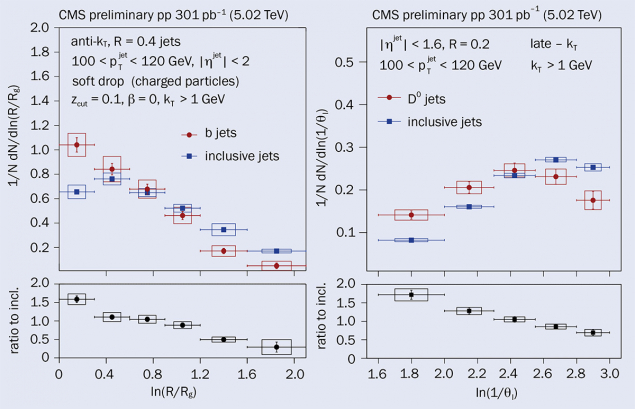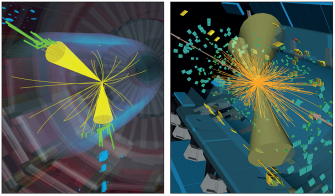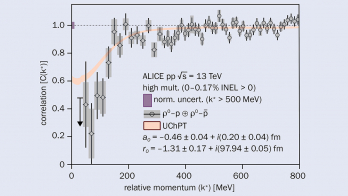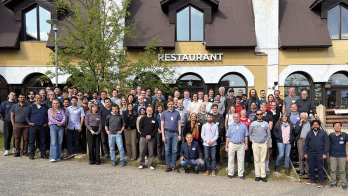A report from the CMS experiment.

Ever since quarks and gluons were discovered, scientists have been gathering clues about their nature and behaviour. When quarks and gluons – collectively called partons – are produced at particle colliders, they shower to form jets – sprays of composite particles called hadrons. The study of jets has been indispensable towards understanding quantum chromodynamics (QCD) and the description of the final state using parton shower models. Recently, particular focus has been on the study of the jet substructure, which provides further input about the modelling of parton showers.
Jets initiated by the heavy charm (c-jets) or bottom quarks (b-jets) provide insight into the role of the quark mass, as an additional energy scale in QCD calculations. Heavy-flavour jets are not only used to test QCD predictions, they are also a key part of the study of other particles, such as the top quark and the Higgs boson. Understanding the internal structure of heavy-quark jets is thus crucial for both the identification of these heavier objects and the interpretation of QCD properties. One such property is the presence of a “dead cone” around the heavy quark, where collinear gluon emissions are suppressed in the direction of motion of the quark.
CMS has shed light on the role of the quark mass in the parton shower with two new results focusing on c- and b-jets, respectively. Heavy-flavour hadrons in these jets are typically long-lived, and decay at a small but measurable distance from the primary interaction vertex. In c-jets, the D0 meson is reconstructed in the K±π∓ decay channel by combining pairs of charged hadrons that do not appear to come from the primary interaction vertex. In the case of b-jets, a novel technique is employed. Instead of reconstructing the b hadron in a given decay channel, its charged decay daughters are identified using a multivariate analysis. In both cases, the decay daughters are replaced by the mother hadron in the jet constituents.
CMS has shed light on the role of the quark mass in the parton shower
Jets are reconstructed by clustering particles in a pairwise manner, leading to a clustering tree that mimics the parton shower process. Substructure techniques are then employed to decompose the jet into two subjets, which correspond to the heavy quark and a gluon being emitted from it. Two of those algorithms are soft drop and late-kT. They select the first and last emission in the jet clustering tree, respectively, capturing different aspects of the QCD shower. Looking at the angle between the two subjets (see figure 1), denoted as Rg for soft drop and θℓ for late-kT, demonstrates the dead-cone effect, as the small angle emissions of b-jets (left) and c-jets (right) are suppressed compared to the inclusive jet case. The effect is captured better by the late-kT algorithm than soft drop in the case of c-jets.
These measurements serve to refine the tuning of Monte Carlo event generators relating to the heavy-quark mass and strong coupling. Identifying the onset of the dead cone in the vacuum also opens up possibilities for substructure studies in heavy-ion collisions, where emissions induced by the strongly interacting quark–gluon plasma can be isolated.
Further reading
CMS Collab. 2024 CMS-PAS-HIN-24-005.
CMS Collab. 2024 CMS-PAS-HIN-24-007.







